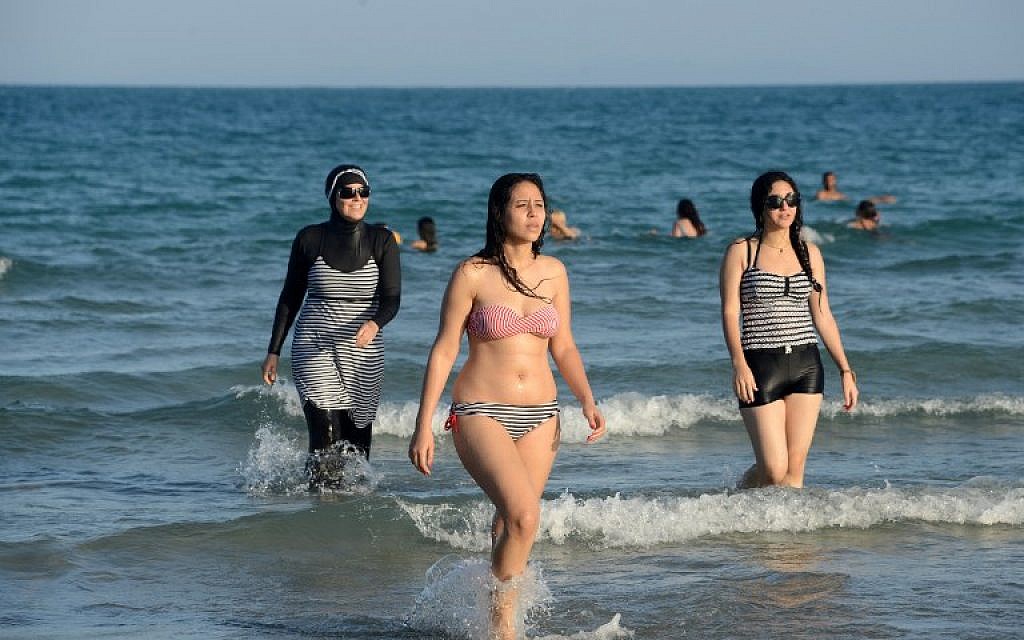By Dr. Glazier’s Religious Freedom Calderwood Seminar Class
This article is a teaching experiment. In spring 2024, I am teaching in a way I never have before. Although the content is familiar–religious freedom–the format is totally new. I am teaching a Calderwood Seminar, an upper level course where students work in a collaborative environment to take turns writing and peer editing public-facing pieces. The Calderwood model was started at Wellesley College and focuses on preparing students to write for real-life situations.
To mark International Women’s Day (March 8, 2024), the students in our class have collaboratively written the following piece about local and global restrictions on women’s clothing choices, restrictions which are often based in religion. I hope you enjoy and learn from their efforts!

In 2016, UA Little Rock student Furdos Al-Ali was banned from an arcade in Sherwood because her hijab went against the arcade’s no headgear policy. It wasn’t the first time she’d encountered prejudiced based on her religious clothing. In an interview with KARK News she stated, “It didn’t really surprise me that it happened, it happened before at other places.”
Al-Ali isn’t alone in her experience. Women in 56 countries experienced harassment due to wearing clothing that was deemed to violate secular or religious norms, according to a 2018 Pew Research Center study of 198 countries. In 75% of these countries, women were harassed for dressing too religiously, while in 33% of these countries, women were harassed for dressing too secular. The astute reader will notice that there is a double standard in some countries, where women are harassed both for dressing too religiously and too secularly.
Not only are women being ostracized in social situations, but they are also experiencing an increasing number of government restrictions on religious clothing. Over the last 10 years, 20 countries implemented new laws restricting the way women can dress, a 50% increase.
These government restrictions can have deadly consequences. For instance, in 2022, Mahsa Amini was arrested, beaten, and ultimately died in the custody of Iran’s religious “morality police” for not covering her head in public, something they deemed a violation of Islamic standards. Her suspicious death sparked global outrage. The Norway-based non-profit organization Iran Human Rights reported 537 people in Iran were killed by security forces at religious freedom protests where women removed their hijabs in solidarity.
The harassment of women, for clothing both religious and secular, is a global issue. Even in Europe, a part of the world that many consider progressive, 21 countries have laws restricting head coverings in some way. This problem also strikes close to home—women who wear hijab in Arkansas may fear being themselves in public. “There are lasting mental impacts, emotional health impacts,” said UA Little Rock Professor Dr. Ten Bensel, an immigrant from Bangladesh who also practices Islam and was in Arkansas when 9/11 occurred. “Think about living in fear all of the time, going outside and you never know when you are going to be harassed.”
Some members of the younger generation may be more hopeful. Dalia, a UA Little Rock student who sometimes chooses to wear a hijab, said: “Wearing a hijab is a ‘mixed bag’ of experiences…For instance, social media can be negative, but has also had a positive impact because it has opened people up and given them access to educate themselves and understanding as to why women wear hijab.” Maybe education about the importance of religious freedom is the key to allowing women the right to be (im)modest.